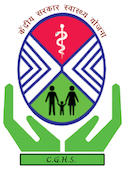Temporomandibular disorders is an umbrella term to describe conditions that cause dysfunction of jaw joint and pain in the jaw joint and the muscles that control the movement of the jaw joint.
The exact cause of temporomandibular joint disorder is challenging to determine. A combination of several factors, such as genetic injury and arthritis, is considered responsible. In this article, we will discuss temporomandibular arthritis in detail and Ayurveda treatment for the same. However, let us discuss a few facts on temporomandibular joint disorders.
Facts on Temporomandibular Joint Disorder
- In most of the cases of temporomandibular joint disorder, the associated pain and discomfort is temporary and can the self-managed or relieved.
- As bones and muscles of the jaw are connected, the pain from TMJ disorder may extend to other body parts and could be felt in the ear, face, neck, and even cause migraine.
- In some cases, the pain may extend up to shoulders and the upper back.
- TMJ disorder may also be caused due to injury that may not hit the jaw directly, for example, injuries to the neck.
- Females Between 18-44 years of age are more at the risk of developing TMJ disorders.
- The patients with chronic inflammatory arthritis are more at the risk of developing TMJ disorder.
- If you are a person who has a habit of teeth grinding or bruxism during stress you may suffer from jaw pain. These habits make TMJ disorder worse. This is why it is better to undergo a stress relief technique.
- Some cases of TMJ disorder is relieved by a soft diet.
- In many cases, TMJ may cause sleep problems.
- After conservative measures fail, surgery is considered the last resort, but only a few people are benefited from the surgical treatment of temporomandibular joint disorders.
- You may not need any treatment for TMJ disorder if there is no limitation of movement or pain associated with clicking or moving jaws. Still we advise do consult our doctor instead of self-management.
Types of Temporomandibular joint arthritis
- Infectious Temporomandibular Arthritis– Infectious temporomandibular arthritis is an infection of the temporomandibular joint. It results from a haematogenous spread of blood borne organisms or direct extension of the adjacent infection. The Jaw area is inflamed. Jaw movement is painful and limited. In the early stages of the disease, the x-ray results are negative, but later on, may show bone destruction. To prevent permanent damage to the jaw joint, it is important to make an early diagnosis.
- Temporomandibular Joint Osteoarthritis – Temporomandibular joint osteoarthritis mostly affects people who are above 50 years. The patient mostly complains of grating, stiffness, or mild pain. The involvement of the joint is generally bilateral. The X-ray or CT scan report shows lipping or flattening of the condyle that suggests dysfunctional changes.
- Traumatic Temporomandibular Joint Arthritis – Rarely an acute injury causes TMJ arthritis. The symptoms include tenderness, pain, and limitation of motion. Diagnosis is made primarily on the history of trauma. In most cases, the X-ray result is negative, except when there is hemorrhage or intra-articular edema that widens the joint space.
- Temporomandibular Joint Rheumatoid Arthritis – About more than 17% of adults and children with rheumatoid arthritis are affected by TMJ disorder. However, usually, the last joints are involved. It leads to swelling, pain, and limited movement. In children, there is face deformity and mandibular growth disturbance. The X-ray report usually negative in the earlier stages but later on show bone destruction.
- Secondary Degenerative Temporomandibular Arthritis – This type of temporomandibular joint arthritis develops in people between 20 to 40 years of age. It follows trauma or occurs in people with persistent myofascial pain syndrome. The characteristic feature of this type of arthritis is the limited opening of the mouth, joint tenderness, and unilateral pain. The diagnosis is made based on the x-ray that shows lipping, spurring, erosion, or flattening of condylar.
Symptoms of Temporomandibular Joint Arthritis/ TMJ disorder
Signs and symptoms of TMJ arthritis include:
- Pain or tenderness of jaw
- A sore and stiff jaw
- Pain in one or both the temporomandibular joints
- Aching pain in or around your ear
- Popping sounds in the ear
- Headache
- Pain while chewing or difficulty in chewing.
- Aching facial pain
- Vertigo and dizziness
- Pain at the base of the tongue
- Pain in the temple area
- Locking of the jaw joint that makes it difficult to open or close your mouth
* Please, note some people may habitually clench their teeth and not due to TMJ disorders.
In some cases, TMJ arthritis causes gritting sensation on clicking sound on opening your mouth or chewing.
If the pain and tenderness in your jaw persistent or if you are unable to open and close your jaw ultimately better seeking medical attention.
Causes of Temporomandibular Joint Disorder
The cause of TMJ disorders not clear. Common causes of TMJ disorders include injury to the teeth or jaw, misalignment of the teeth or jaw, teeth grinding or clenching, poor posture, stress, arthritis, and gum chewing.
Risk Factors for TMJ Disorders
Risk factors that increase the chances of developing TMJ disorders include:
- Various types of arthritis, such as osteoarthritis or rheumatoid arthritis
- Jaw injury
- Long-term clenching or grinding of teeth
- Certain connective tissue diseases that may affect the temporomandibular joint.
How TMJ disorder Occurs
The temporomandibular joint is a complex structure containing bones, muscles and tendons that connects the jaw to the skull and acts as a sliding hinge. The TMJ is made by the mandibular condyle and glenoid fossa of the temporal bone that is a fibrous articular disk that acts as a cushion between the joint surfaces. On each side of the jaw, there is a joint. If it is damaged or injured, it leads to localized pain disorder and is termed as a temporomandibular joint syndrome or mandibular temporal disorder. TMJ disorders is multifactorial in origin, but most of the problem is related to internal disarrangements within the joints itself. This causes disturb movement of the jaw.
Painful TMJ disorder occurs due to the following reasons:
- The disk moves out or erodes of its proper alignment
- Arthritis damages the joint’s cartilage
- An impact or blow damages the joint.













